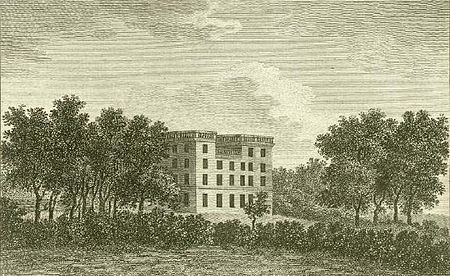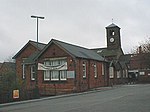Tupton is a village and civil parish in North East Derbyshire, Derbyshire, England, 4.5 miles (7 km) south of Chesterfield. The population of the civil parish including Egstow and Old Tupton was at the 2011 Census 3,428. It lies just north of Clay Cross on the A61 (Derby Road) which runs from Chesterfield to Alfreton. It comprises the areas of Old Tupton and New Tupton. However, it is generally referred to as Tupton. A similarly named area, Tapton, is a few miles away, being part of Chesterfield.
The village has a primary school, and a secondary school with a sixth form. Tupton also has two general stores, a post office, hair dresser, tanning studio, building supplies, tyre services, multiple garages, car repair centres, preschool nursery, three pubs, one club, a fish and chip shop, a nursing home, a coffee house and a pharmacy.
Other settlements near the village are Wingerworth, Grassmoor and North Wingfield.
A carnival called the Tupton Carnival is a yearly event held on a Saturday in July. This was first started in 2003 and has grown in size and attendance as the years have gone by. A young lady is elected Carnival Queen and travels through the village attended by the carnival princes and princesses and is followed by a procession of floats, bands, and fancy dress participants. The parade ends on the Primary school field for an afternoon of fun and live music, with stalls, displays, and various competitions.
Tupton has also seen new development around Ankerbold Road, which runs on the outer edge of the village, close to North Wingfield. A large modern housing estate has been built around the Pond Lane proximity, as well as recent housing to the south. Tupton also has the Midland Main Line passing straight through it. At the bottom of Station New Road, there is a bridge crossing over the track into North Wingfield; this was the location of Clay Cross railway station.
It is also known that Tupton has been a settlement since Anglo-Saxon times, as the historic Ryknield Street runs directly through the village. The locality was formerly known as "Topetune" and "Tuphome." Tupton is shown on the C. Smith New Map of Great Britain and Ireland in 1806 and on the first Ordnance Survey maps, Tupton Moor, Tupton Over Wood and Tupton Hall are shown.










